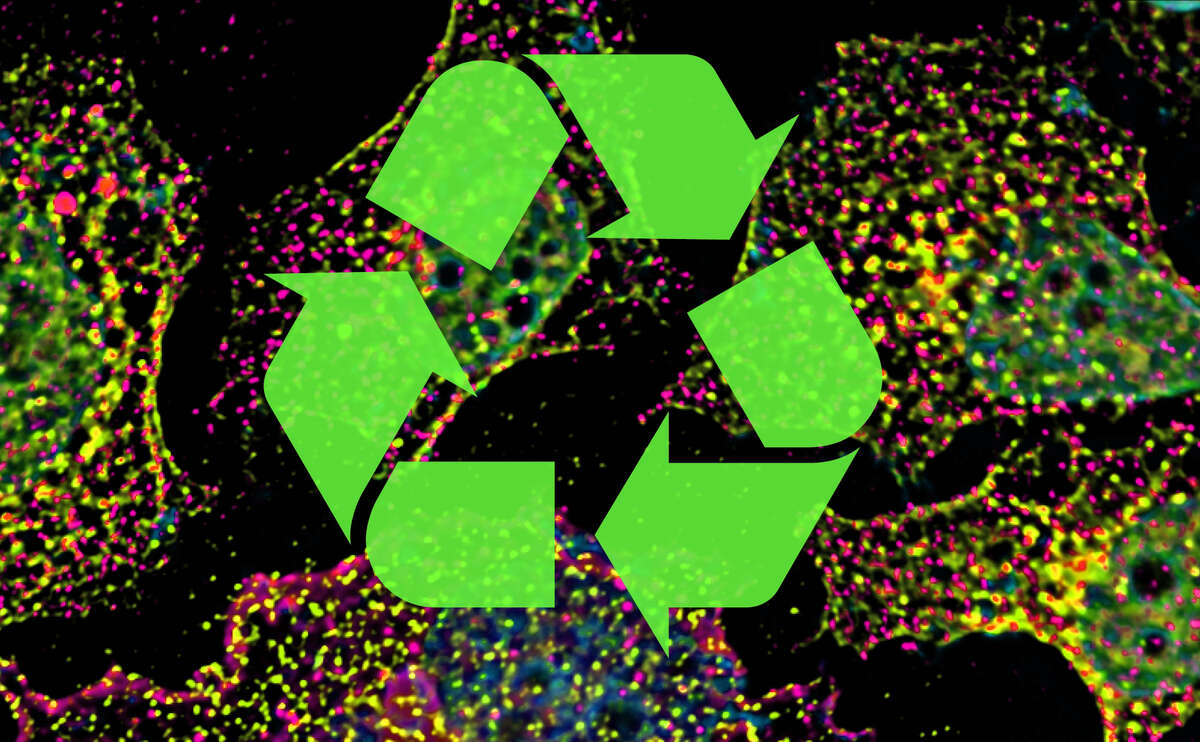Prof. Anne Spang on the relocation and recycling competence of cells
Sorting out, packing, moving... All this kept Biozentrum employees busy from morning to night in the summer of 2021 and it also plays a key role in Prof. Anne Spang's research. Spang's team is investigating the innermost parts of cells and how they sort, transport and recycle their belongings. And it seems that humans could learn a lot from the cell.
What are you and your team investigating?
We investigate how cells sort out, recycle and transport proteins. In other words, we are looking at relocation in miniature. And a closer look reveals that we humans work similarly to the cell in some respects. But the cell is even more effective.
In what way?
Cells don't spend hours worrying about every decision but make them quickly and effectively. And in the process, quality control does not suffer at all.
How exactly do the cells make their decision?
This is still largely a mystery for researchers. We know that the cells have a sophisticated three-stage system that makes it easier for them to sort out, pack and move. First, the material, for example proteins, are checked, sorted into three categories and labeled: The first category are proteins that are still urgently needed and therefore have to be kept and moved. The second are proteins whose whereabouts and usefulness are checked again and provisionally stored, and in the third category are unusable proteins to be disposed of and recycled.
What happens to the material that the cell no longer needs?
The discarded proteins that are no longer needed are disassembled into their basic building blocks and thus serve as raw material for the production of new compounds.
Could one say that cells are not only removal professionals, but also moving and recycling professionals?
Absolutely! Cells are definitely ahead of the game when it comes to recycling, because their system is highly energy-efficient and sustainable. Besides, cells are used to recycling and moving. They constantly move their proteins around. Proteins that are transported from the inside of the cell to the outer membrane or to other cell organelles, from the endoplasmic reticulum, where they are produced, via the Golgi apparatus, the sorting station to their final destination. Such transport logistics around the cell are daily business for the cell.
You have just moved to the 14th floor of the new Biozentrum building. How are your personal moving skills?
Since I've already had to move about ten times in my private life, I'm quite used to moving. So, the move was not a big hurdle for me. It's a different story when it comes to sorting things out. I just love to keep things so that I can retrieve and use them again later. Since I couldn't take everything with me to the new building, sorting things out was a challenge. That's why I simply did it like the cell: while packing, I already determined the final destination of each item in the new lab or office. Then I packed and labelled the corresponding box.
Does that make the way you moved similar to how a cell does its moving?
Not really, because there is one big difference: Unlike us humans, who plan everything precisely beforehand, the cell remains extremely flexible in its decision making. It always has backup options at hand should circumstances change. When under stress, for example, it immediately changes its sorting criteria and labels its proteins differently. We simply have less routine than the cell and as far as flexibility is concerned, we can learn a much from the cells.
Research Group Anne Spang



